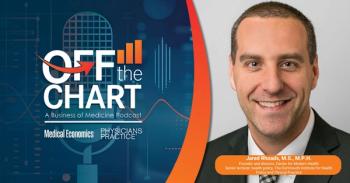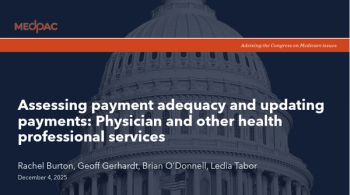
How to drive vital care with proactive patient communication
Key Takeaways
- Automation in patient communication enhances efficiency, allowing practices to engage patients proactively and improve preventive care and chronic disease management.
- Automated systems deliver personalized messages, freeing staff for complex tasks and strengthening patient-provider relationships.
Private practices can use automation to close care gaps, improve outcomes, and deepen patient trust
Independent physicians juggle a lot of responsibilities, including caring for patients while also managing the day-to-day demands of running a practice. It’s a tough balancing act, and there’s little time or room for inefficiencies. One area that often gets overlooked is patient communication. When it's handled manually, it can
Leveraging automation for practice management
The solution lies in digital tools that can help
Automated communication platforms make that possible. This technology enables practices to deliver timely, personalized messages at scale, helping to close preventive care gaps, remind patients of follow-ups, and manage chronic conditions without adding to staff workload.
Shifting from reactive to proactive
Preventive care is one of the most effective ways to improve long-term health outcomes and reduce overall health care costs, yet it’s often underutilized. According to the CDC, only
For small practices, the challenge is twofold. Patients often need reminders or encouragement to schedule preventive care, and staff may lack the time or resources to consistently conduct outreach.
Let’s consider a common example: cancer screenings. Many practices rely on patients to remember when it’s time for a mammogram or colonoscopy, so these preventive services often fall through the cracks. An automated system can flag patients who are due and send gentle nudges via text, email, or phone call, making it more likely the patient follows through and schedules their appointment.
The same applies to chronic disease management. For patients with conditions like diabetes or hypertension, consistent touchpoints are essential. Automated messages can prompt patients to schedule lab work, refill medications, or simply check in about symptoms without waiting for the next visit.
Automated communication can also encourage greater proactiveness and engagement around timely seasonal care, such as back-to-school immunizations and flu shots.
Balancing efficiency with human touch
For many small practices, the idea of automation may sound impersonal. But when leveraged properly, these tools actually enhance the patient-provider relationship. Messages can be tailored to the individual, using their name, language preferences, and care history, to reflect the tone and care patients expect from their trusted provider.
Also,
Meeting patients where they are
Automation also allows practices to reach patients on their preferred channels. Some patients may respond to a text message within minutes, while others prefer a phone call or email. The right platform can learn and adapt to these preferences, ensuring messages are received and acted upon more consistently.
This type of consistent, multichannel engagement is especially important in communities where social determinants of health impact care access. Automated tools can help bridge gaps by prompting patients to take action, regardless of whether they’ve been to the office recently.
Driving better outcomes and stronger practices
Ultimately, proactive communication is about more than convenience. It’s about outcomes. Studies show that patients who receive regular, timely outreach are more likely to adhere to care plans, keep appointments, and engage in their health.
For small, independent practices, this
Implementing change intelligently
Many physicians assume implementing automation means a total overhaul of their operations. But it can start small: begin with appointment reminders, then add outreach for preventive screenings or chronic care check-ins. Over time, you can layer in more sophisticated workflows that respond to patient behavior, like sending a follow-up message if a patient doesn’t book a recommended screening.
The key is to choose a solution that integrates with your existing systems, supports your staff, and gives you the flexibility to scale up as your needs evolve.
Working smarter, not harder
Independent practices are under pressure to deliver high-quality care with limited resources. By embracing automated communication tools, physicians can work more intelligently to improve engagement and foster deeper patient relationships. In a world where time is scarce and patient expectations are high, automation is proving to be more advantageous than ever for driving better patient outcomes.
Chuck Hayes is the Vice President of Product Management for
Newsletter
Stay informed and empowered with Medical Economics enewsletter, delivering expert insights, financial strategies, practice management tips and technology trends — tailored for today’s physicians.















